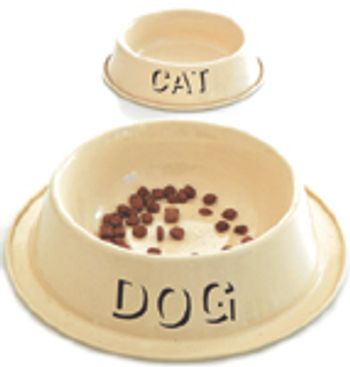
An elimination diet trial is the only way to diagnose a food allergy in a dog or cat. Heres a step-by-step guide for selecting and conducting an elimination diet trial.
Dr. Lewis sees dermatology patients in California, Arizona, Nebraska, New Mexico, Nevada and Utah. In 1991, he established Dermatology for Animals, PC.

An elimination diet trial is the only way to diagnose a food allergy in a dog or cat. Heres a step-by-step guide for selecting and conducting an elimination diet trial.

Pain-free delivery is just an amuse-bouche when it comes the advantages of this treatment for atopy.

Consider oral allergen administration when treating patients with this skin condition to reduce reaction risk and achieve an optimal result.

Dr. Thomas Lewis discusses atopic disorders, sublingual immunotherapy, and barrier function.

Dr. Thomas Lewis discusses why we are seeing methicillin resistance on a daily basis and how to prevent its spread.

Diet trials are key to diagnosis, but common complications must be avoided.

Take the time to find the right trial diet, and counsel clients on what not to feed.

A look at the most common dermatologic signs and consequences.

As all veterinarians know, the big three causes of follicle infections are demodicosis, dermatophytosis and bacterial pyoderma. It may be surprising to learn that I probably receive more telephone requests for advice for the up to date treatment options regarding demodicosis and dermatophytosis than any other topic.

Atopy or Atopic dermatitis continues to be one of the most common dermatological disorders afflicting both dogs and cats.

Allergen specific immunotherapy (desensitization or allergy shots) has been one of the mainstays of care in specialized dermatology practice for years.

When a clinician is presented with a pruritic patient, it is correct to initially consider, and rule out, the more common hypersensitivity disorders.

Pododermatitis is can be one of the more challenging manifestations of skin disease, both in terms of establishing a definitive diagnosis and providing effective care.

There are a limited number of tests a veterinary practitioner will be required to perform when presented with a patient with skin disease. For some of these tests, subtle and simple techniques can influence the accuracy of the results.

While some people claim that all skin diseases look alike, the fact is to the trained eye, even subtle difference in skin changes can offer clues to the underlying disease process. One of the first steps in appreciating and understanding the differences of skin lesions is to learn what primary and secondary skin lesions actually are, and what they represent.

Food hypersensitivity, food intolerance and other adverse reactions to food (ARF) could be the subject of a carrier of study. Food hypersensitivity in the dog and cat can cause a myriad of effects on several different systems of the body, with the integument and digestive system being most commonly affected.

Dr. Thomas Lewis discusses this irritating dermatologic disease.

Thomas P. Lewis II, DVM, DACVD, discusses the possible concerns of this drug combination on the liver.

Allergen specific immunotherapy (desensitization or "allergy shots") has been one of the mainstays of care in specialized dermatology practice for years. In the mid 1980s serology (RAST) testing was marketed to veterinarians, and since then numerous companies have developed their own RAST or ELISA tests.

Diseases that affect the nose include more than discoid lupus or squamous cell carcinoma. This lecture will show many photographs of nose disorders to teach the practitioner some of the subtleties to consider when presented with a patient with nasal disease.

Atopy or Atopic dermatitis continues to be one of the most common dermatological disorders afflicting both dogs and cats. At our referral dermatology specialty practice, 75% of our patients have atopic dermatitis as one of the final diagnosis.

Food hypersensitivity, food intolerance and other adverse reactions to food (ARF) could be the subject of a carrier of study. Food hypersensitivity in the dog and cat can cause a myriad of effects on several different systems of the body, with the integument and digestive system being most commonly affected.

When a clinician is presented with a pruritic patient, it is correct to initially consider, and rule out, the more common hypersensitivity disorders. Atopic dermatitis, adverse food reactions, and parasite hypersensitivities (especially flea allergy dermatitis) are seen on a daily basis.

Pruritus is the most common manifestation of skin disease in the horse. Pruritus is exhibited in a number of ways including the obvious scratching, rubbing, chewing and biting, but also in more subtle fashion such as head shaking, foot stamping or "irritability".

There are a limited number of tests a veterinary practitioner will be required to perform when presented with a patient with skin disease. For some of these tests, subtle and simple techniques can influence the accuracy of the results.

Published: May 1st 2012 | Updated:

Published: December 19th 2012 | Updated:

Published: December 19th 2012 | Updated:

Published: November 1st 2010 | Updated:

Published: November 1st 2010 | Updated:

Published: November 1st 2010 | Updated: